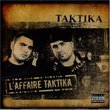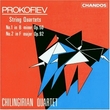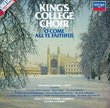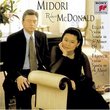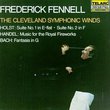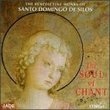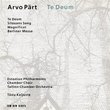| All Artists: Antoine Brumel, Paul van Nevel, Huelgas Ensemble Title: Brumel: Missa "Et ecce terrae motus"/Mass in 12 Voices Members Wishing: 1 Total Copies: 0 Label: Sony Release Date: 1/18/1991 Genre: Classical Styles: Opera & Classical Vocal, Historical Periods, Early Music Number of Discs: 1 SwapaCD Credits: 1 UPC: 074644634822 |
Search - Antoine Brumel, Paul van Nevel, Huelgas Ensemble :: Brumel: Missa "Et ecce terrae motus"/Mass in 12 Voices
 | Antoine Brumel, Paul van Nevel, Huelgas Ensemble Brumel: Missa "Et ecce terrae motus"/Mass in 12 Voices Genre: Classical
|
Larger Image |
CD DetailsSimilar CDs
Similarly Requested CDs |
CD ReviewsWorthwhile rendition of a beautiful piece 03/14/1999 (4 out of 5 stars) "I have owned the Tallis Scholars' version of Brumel's 'Earthquake mass' for five years and it remains one of my favourite pieces of music. The Huelgas Ensemble tackle it in a very different fashion and the overall sound is very different. How can I put it? Softer, more diffuse, less sonorous and with less sense of pacing than the Scholars'. That may sound negative but it isn't meant to - the lack of such a hard-edged structure is in itself appealing. In conclusion, a terrific CD that all Brumel fans should own." Another revelation from Paul van Nevel Sator | Sydney, Australia | 06/12/2005 (5 out of 5 stars) "Thomas Morley wrote in 1597 that only Brumel and Josquin were able to teach one about the older canonic techniques of the composers of the Prima Prattica. Even Orlando Lassus performed the Missa 'Et ecce terrae motus' over fifty years after Brumel's death, in an obviously sign of great admiration. This work is written in a monumental 12 parts and has a tremendous immediacy of appeal. This is the world premier recording that produced such a stir when it appeared that it generated a lot of 'me too' recordings by the likes of the Tallis Scholars. Due to subtle coluring of the vocal tone with a sound more from the throat and chest, Nevel's approach to this music is richer hued and differentiated than that of the bright, and homogeneous sounding English choral groups, who insist on always only ever using a head voice. The resultant warmth is for me a great relief from the icy puritanical English sound. Nevel's general approach is as always deeply poetic and meditative in a way that is always much more immediately communicative than icy gloss. Mary Berry writes an unusually honest review in Gramophone magazine that is well worth quoting: "The Tallis Scholars sing a semitone higher than the written pitch, which is that chosen by the Huelgas Ensemble. Van Nevel cultivates a rich reedy vocal quality and the lower pitch has the advantage of encouraging deeper and darker sonorities; though the sound is more opaque, lacking the clarity of The Tallis Scholars." It should be mentioned that practice of transposing like this is perfectly in keeping with period practice and neither group is being more 'historically accurate' in this case. However, I always feel that the darker, more chiaroscuro feel of the Huelgas sonority reminds me of the feel of a lot of contemporary painters who prefer a far more somber coloring, whereas the Tallis Scholars seem to have a bright clean texture more like a Picasso or Kandinsky. Then again Peter Phillips has even gone so far as to deny that the Tallis Scholars are even an early music choir - he just wants the music to sound like he thinks it should, which is based on an ideal he learnt while at Cambridge. Mary Berry goes on: "Where the two choirs differ most, however, is in the last movement, the Agnus Dei. The Munich source, used by both choirs, is deficient at this point and some reconstruction is needed. Van Nevel has supplied an ingenious canonic solution to the first (and third) Agnus Dei, with its ''virtuosic and turbulent'' progression of mensural changes. He has, moreover, replaced the missing Agnus Dei II by a section from an independent Danish source, a section rejected by Peter Phillips and Francis Knights on the grounds that it was scored for six voices only and voices using different ranges from those in the rest of the Mass. The net result is that the two choirs present what amounts to two completely different final movements." Quite correctly, Van Nevel - whose version might be preferred on this ground alone - has carried out the more ingenious and thoroughly researched reconstruction of the missing parts. However, the most telling comment of all by Mary Berry in her comparison of the Huelgas and Tallis Scholar Brumel recordings is this: "There is an infectious warmth and sense of involvement in the singing of the Belgian group". While French critics tend to carry on a bit (too much sometimes) in criticizing the Tallis Scholars for their 'perfection glacée' (icy perfection), this is about as close an admission as you would ever get from an English critic that the Huelgas Ensemble have a far warmer and communicative sound. Interestingly all of these comments by her come from a review of the Tallis Scholar's recording - yet she still ends up writing more about the Huelgas Ensemble than the Tallis Scholars! The accompanying Sequentia 'Dies irae' is also a fascinating work although much darker and medieval in feel and makes a worthy filler for this superb CD." Exciting recording of two vary different works R. Rockwell | Brooklyn, NY USA | 02/18/2003 (5 out of 5 stars) "Unlike the previous reviewers, I am not a long-time fan of early music and have not listened to other recordings of the mass.
The twelve voice mass based on an Easter antiphon from which it derives its name is a masterpiece from end to end. As someone without any musical education, I found that the notes provided a great backgroud to understanding the mass and how it is laid out. Brumel was one of the first composers to compose a polyphonic requiem. This is included on this CD. The sequence is accompanied by trombones on several occasions which make this even more beautiful. The requiem sounds more primitive that the mass since it is based on Gregorian chant but it is haunting, I offer my review as I have stated from a wholly subjective basis. I found the mass joyous and the requiem filled with dread and hope. I will be listening to this CD often" |

 Track Listings (14) - Disc #1
Track Listings (14) - Disc #1